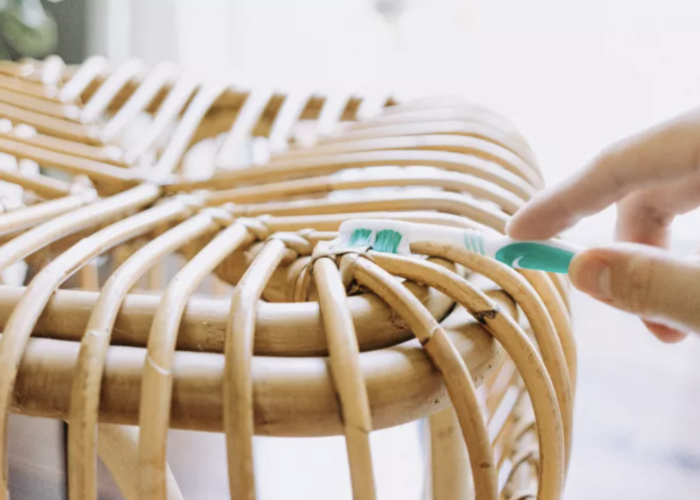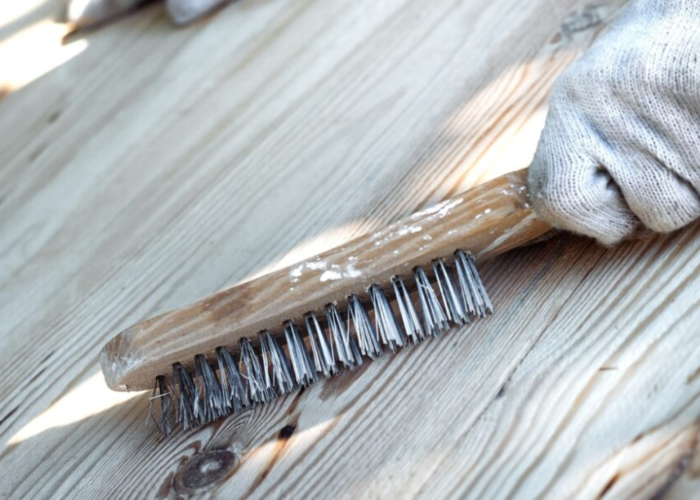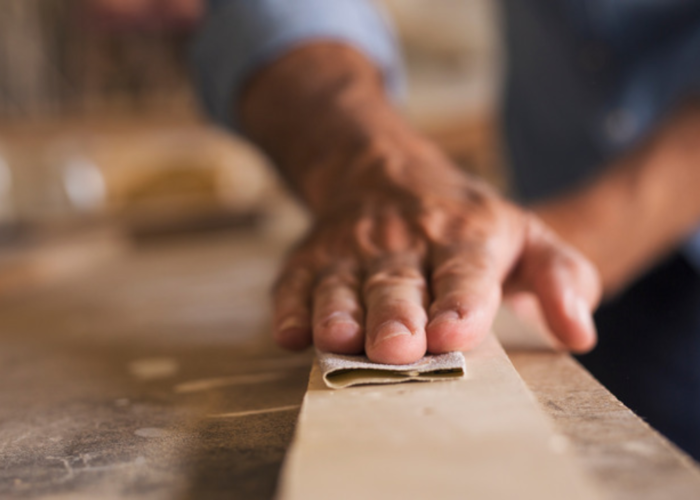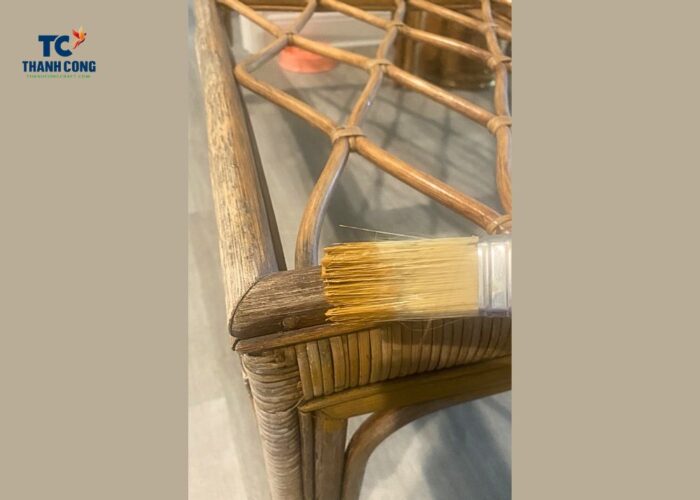Over time, outdoor elements and wear can cause paint on wicker surfaces to chip, fade, or lose its vibrancy. Therefore, removing the old paint layer on rattan wicker furniture is an important step to preserve and refresh them. So, how to remove old paint from wicker furniture?
In this guide, we’ll explore effective methods and best practices for stripping away layers of old paint from wicker, ensuring that your furniture not only regains its original allure but also sets the stage for a stunning transformation. Join us on this journey to discover the art of paint removal and unleash the hidden potential of your wicker treasures.
1. How to remove old paint from wicker furniture?
Removing old paint from wicker furniture can be a meticulous process, but with the right tools and techniques, you can restore its natural beauty. Here’s a step-by-step guide on how to remove old paint from wicker furniture:
Materials and Tools Needed:
- Paint scraper or putty knife;
- Wire brush or toothbrush;
- Fine-grit sandpaper;
- Coarse-grit sandpaper;
- Chemical paint stripper (optional);
- Protective gloves and eyewear;
- Clean, damp cloth;
- Primer and paint (for refinishing).
Step-by-Step Process:
To remove old paint on rattan furniture, you need to prepare some tools and materials such as: brush, soap, water, sandpaper, cloth, new paint and eye protection. Then, you can follow these steps:
Step 1: Clean the rattan furniture
Using a small brush to remove dust and stains. You can use soap and water to wet and clean the gaps.
Use a paint scraper or putty knife to gently scrape off any loose or peeling paint. Be careful not to damage the wicker strands.

Use a wire brush or an old toothbrush to remove paint from the crevices and hard-to-reach areas of the wicker. This helps eliminate paint remnants stuck in the weave.

Step 2: Sanding to remove the old paint
To remove old paint from wicker furniture, start with a coarse-grit sandpaper (60 to 80 grit) to remove the remaining paint and smooth the surface. Sand in the direction of the wicker weave to avoid damaging it. Then switch to a medium-grit sandpaper (120 to 150 grit) to further smooth the surface and remove any remaining paint or rough spots.
Finish the sanding process with a fine-grit sandpaper (220 grit) to achieve a smoother surface.
This step is crucial if you plan to repaint the furniture to ensure good adhesion of the new paint. Wipe down the entire surface with a clean, damp cloth to remove dust and debris and allow the furniture to dry completely before proceeding.

If you want to remove old paint from wicker furniture without sanding, apply a paint stripper specifically designed for wicker or wood surfaces by brushing or spraying the stripper onto the painted areas. Allow the stripper to sit for the recommended time to soften the paint. Use a putty knife or plastic scraper to gently peel away the softened paint.
Afterward, wipe down the wicker with a clean, damp cloth to remove any residue.
Step 3: Choose a new paint type suitable for rattan furniture
You can use oil-based or water-based paint depending on your preference and weather conditions. You should choose a paint color that harmonizes with the interior space.

Step 4: Paint the rattan furniture according to the manufacturer’s instructions
You should paint thin and even layers, avoiding paint dripping or too thick. You should also keep a safe distance between each painting session to let the paint dry completely.
2. FAQs
2.1 Do I need to sand off old paint on furniture?
It’s not necessary to sand off if the old paint is in good condition with no signs of peeling, flaking, or chipping. You only need to clean the surface and appl a new coat of paint.
However, if the old paint is deteriorating, it’s crucial to address the issue before applying new paint. Sanding is a common method to remove chipping or peeling paint. This not only helps create a smoother surface for the new paint but also ensures better adhesion.
After sanding, it’s important to clean the surface thoroughly to remove any dust or debris before applying the new paint.
2.2 Is it better to sand or strip paint?
Paint strippers offer advantages over sanding by efficiently removing multiple layers of paint, saving time, and requiring less physical labor, making them ideal for large or intricate surfaces. They preserve surface details, generate less dust, and are applicable to various materials, including delicate ones where sanding may be too abrasive.
Additionally, paint strippers can access tight spaces and are suitable for intricate designs.
While they provide these benefits, users should prioritize safety measures, including protective gear and proper ventilation, and be mindful of responsible disposal practices for used stripper and paint residue.
2.3 How do you clean furniture after stripping paint?
After removing the paint, you need to clean the furniture by following these steps:
- Use a paper towel or soft cloth to wipe off dust and paint residue on the surface of the furniture.
- Use warm water diluted with mild soap or wood cleaner to wipe the surface of the furniture again. Avoid using too hot water or strong detergents, as they may damage the wood.
- Use a dry cloth to dry the furniture. Keep the furniture in a cool and dry place to prevent mold.
- If you want, you can use wax or wood oil to protect and polish the furniture. Apply wax or wood oil evenly on the surface of the furniture, then use a soft cloth to rub gently for wax or oil to penetrate into the wood.
Your wicker furniture is now liberated from the clutches of old paint, ready to shine in its natural glory or embrace a fresh coat of your preferred hue. Happy crafting, and may your wicker wonders continue to weave stories of style and resilience!
If you have any further questions, don’t hesitate to send thanhcongcraft an email us at info@thanhcongcraft.com or message us at WhatsApp: +84967485411. Hope to serve you soon! Best regard!


